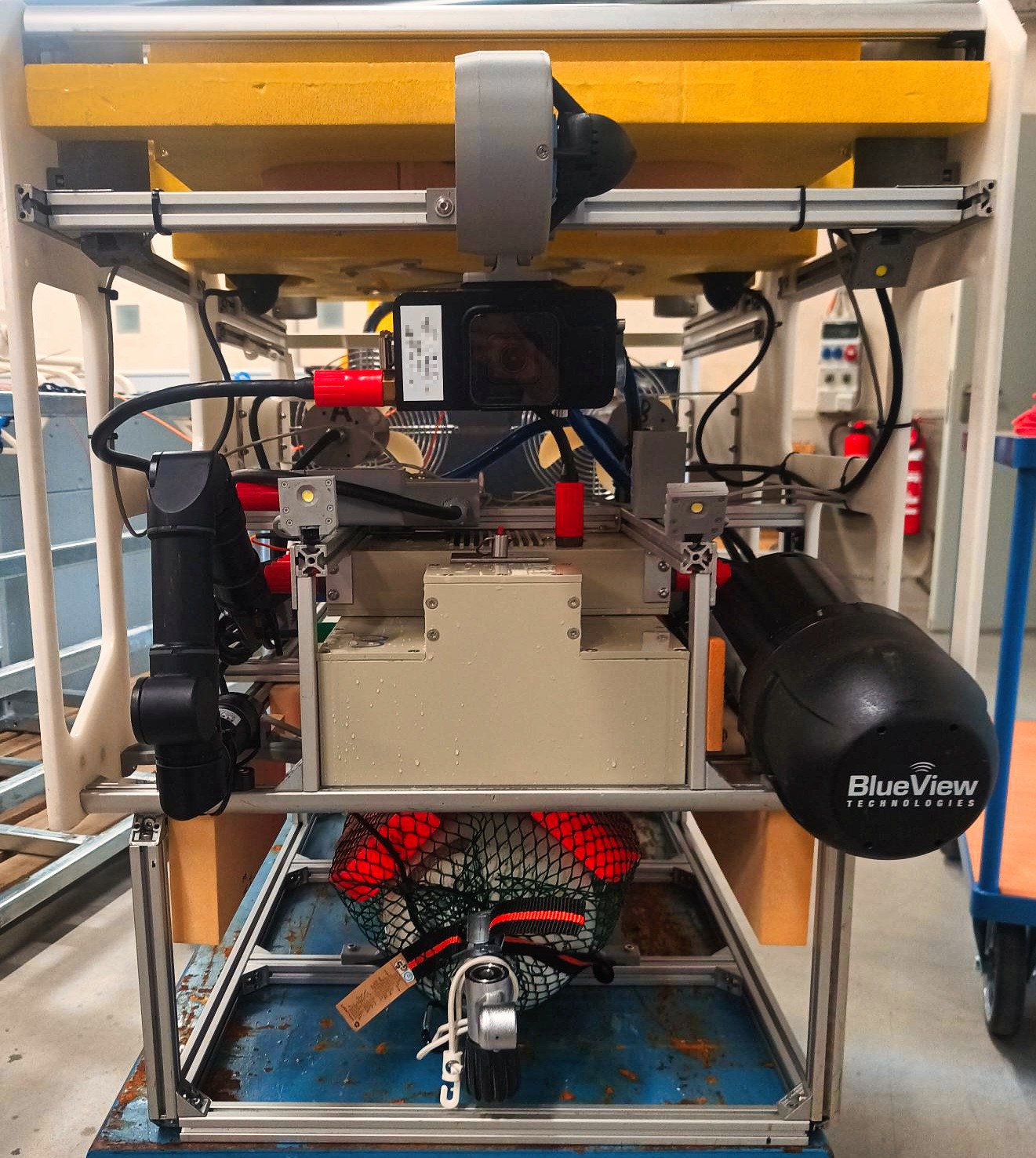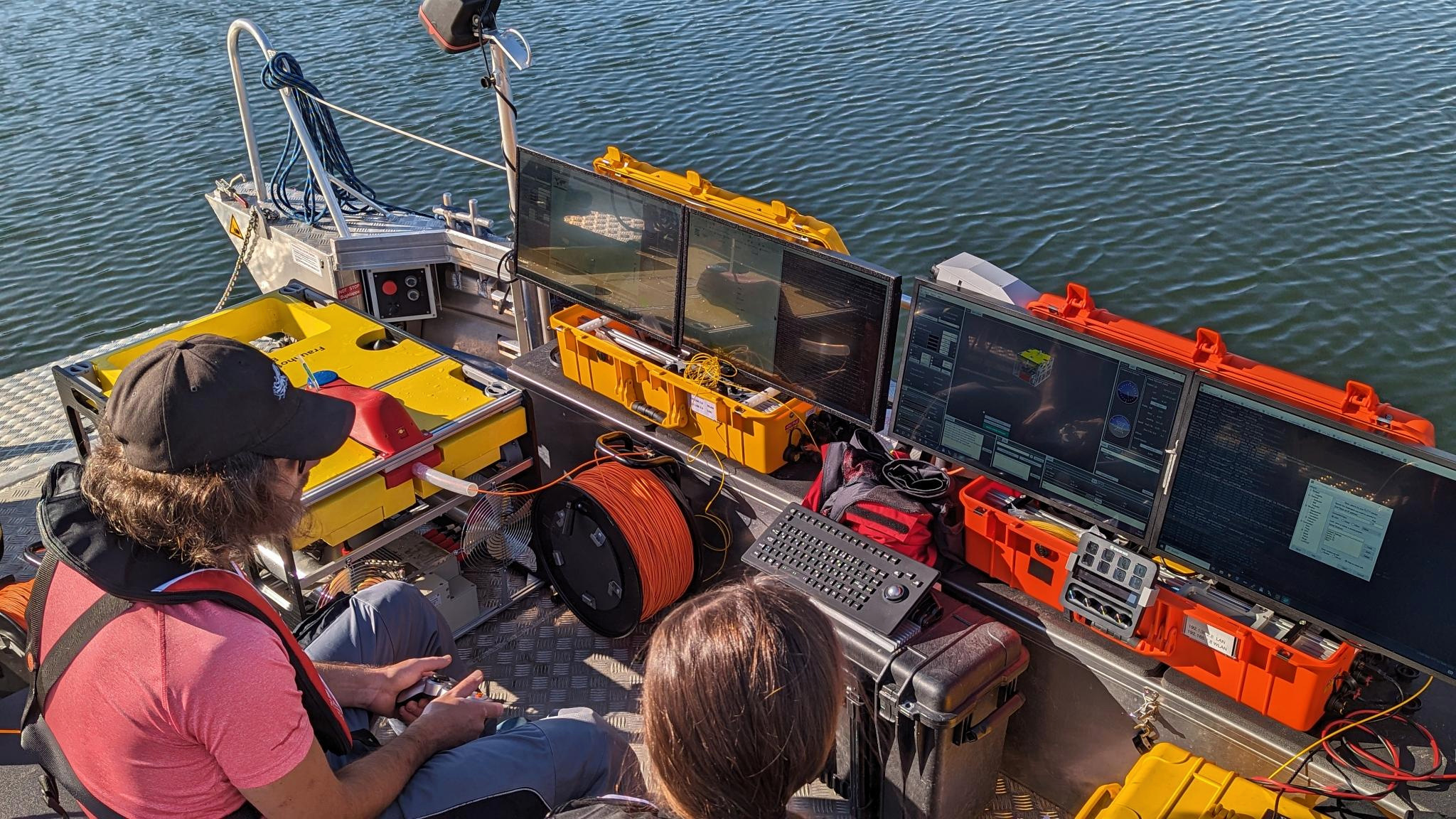© Fraunhofer IOSB
In the field of underwater archaeology, the department has been working successfully with the Saxony-Anhalt State Office for the Preservation of Monuments and Archaeology for many years. For the first time, an autonomous surface vehicle was deployed on the Süßen See lake at the end of 2018. Equipped with a high-resolution multibeam echo sounder, an approximately 7,000-year-old sunken burial mound was surveyed and 3D modeled.
In the following years, the ROV (Remotely Operated Vehicle) developed at the institute was used several times in the Süßen See and Arendsee lakes to check and verify objects from sonar data. They provide valuable assistance to archaeologists in the Süßen See: the ROV creates high-resolution videos and sonar data of objects and structures that can remain hidden even to experienced scuba divers in the murky waters.
In 2020, another sensor was successfully integrated into the vehicle. This is an underwater laser scanner from the company Kraken Robotik. This sensor allows the most accurate measurement of underwater structures to date - deviations in the 3D model created are less than one millimeter. This sensor was first tested in the IOSB-AST test basin and later tested in practice in both the Süßen and Arendsee lakes.
 Advanced System Technology branch AST of Fraunhofer IOSB
Advanced System Technology branch AST of Fraunhofer IOSB


